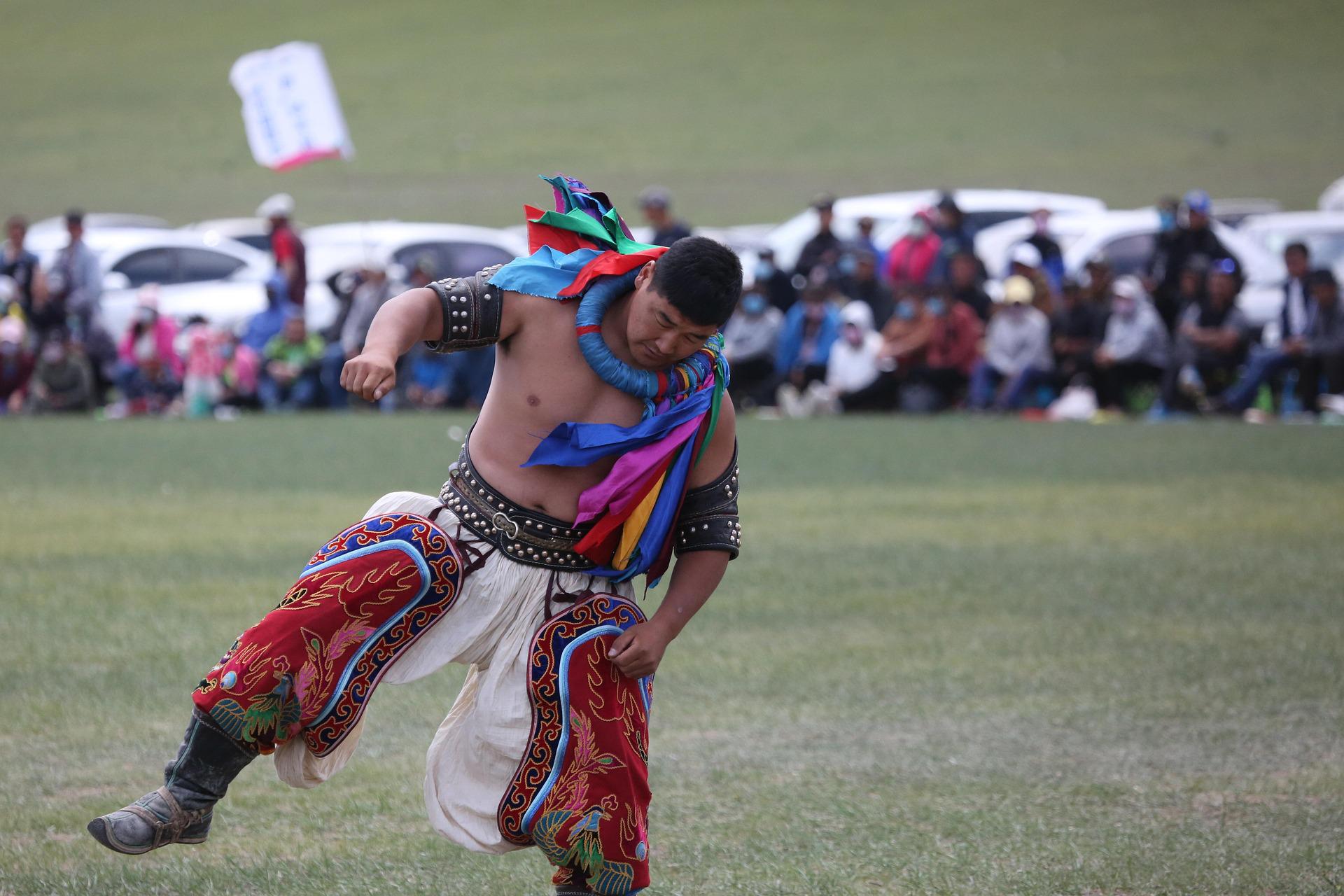
If you've never seen Mongolian wrestling before, you're in for something truly special. Known locally as Bökh, this is one of the oldest and most respected forms of wrestling in the world. It’s not just a sport — it’s a celebration of heritage, strength, and honour that continues to play a central role in Mongolian life today.
Bökh has no weight classes, no time limits, and no flashy showmanship. The rules are simple: make your opponent touch the ground with anything other than the soles of their feet or palms. What looks simple is actually a deep test of balance, strategy, and stamina — and every movement is packed with cultural meaning.
You’ll usually see Bökh at the heart of Mongolia’s biggest celebration, the Naadam festival, alongside horse racing and archery — the “Three Manly Games.” Wrestlers wear a tight-sleeved, open-chested jacket called a zodog and snug shorts called shuudag. Before and after each match, they perform an eagle dance, paying respect to the sky, the land, and the people watching.
But Bökh isn’t only practised in the independent state of Mongolia. It’s also a powerful cultural symbol in Southern Mongolia (also known as Inner Mongolia), where Mongolians continue to practise and celebrate their heritage despite increasing cultural restrictions.
What’s interesting is that Mongolian wrestling has also helped shape global wrestling success. Mongolian athletes have gone on to win Olympic medals in freestyle wrestling and judo. Their traditional training builds exactly the kind of agility, endurance, and explosive power that modern wrestling requires.
Now, if you think this is all limited to Mongolia — think again.
Mongolian wrestlers have also taken the world of Japanese sumo by storm. Over the last two decades, some of the most successful sumo wrestlers in history have come from Mongolia. Names like Asashōryū, Hakuhō, and Harumafuji are legendary in Japan. These athletes grew up with Bökh, and brought their skill, discipline, and fighting spirit into the strict world of sumo — becoming yokozuna (the highest rank) and dominating tournaments.
So if you're discovering Mongolian wrestling for the first time, you're not just learning about a sport. You're meeting a cultural force that’s shaped generations — from the open steppes to Olympic podiums, from Naadam to the sumo rings of Tokyo.